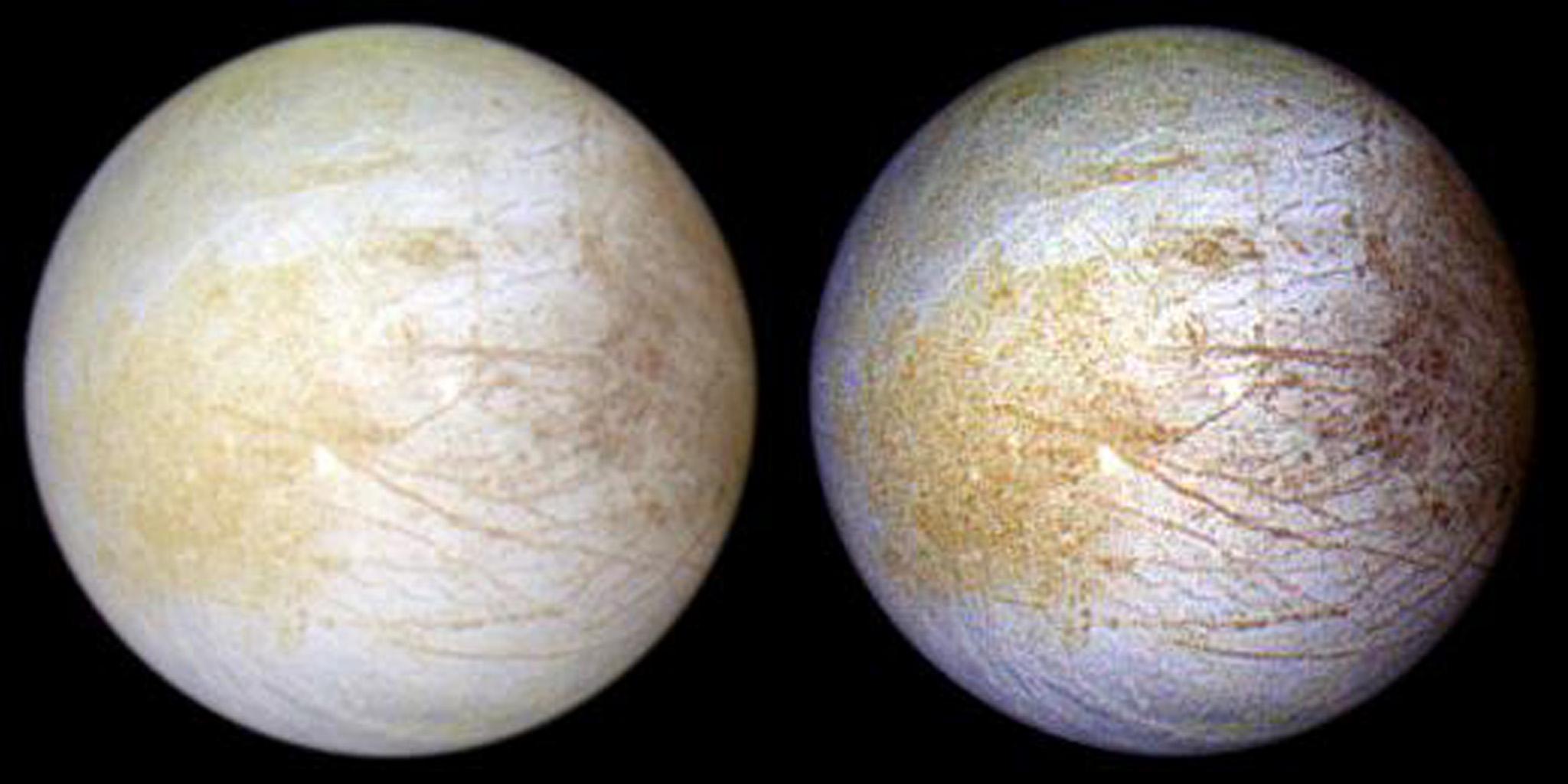
Astronomers have spotted something unexpectedly familiar on the surface of Jupiter’s moon Europa — sodium chloride, better known as table salt. Europa has been imaged several times over the years, but this is the first time that scientists have found evidence of the compound.
The salt is visible in the image above as yellow patches on the surface of the moon, and its presence indicates that Europa could have oceans which are salty like our oceans here on Earth. These oceans are hidden beneath an icy shell, and were previously thought to contain magnesium sulfate salts which are similar to bath salts rather than sodium chloride.
Using near-infrared spectroscopy data from the Galileo spacecraft, scientists were able to see the water ice and some kind of salt. But they couldn’t tell it was sodium chloride until they used higher resolution data from the W. M. Keck Observatory. This is because sodium chloride can’t be seen with near-infrared spectroscopy. It can only be seen using light in the visible spectrum and a special process of radiation has to be present in order to spot it.
“Sodium chloride is a bit like invisible ink on Europa’s surface,” JPL scientist Kevin Hand explained in a statement. “Before irradiation you can’t tell it’s there, but after irradiation the color jumps right out at you.” Hand investigated the irradiation process which makes the sodium chloride should up as yellow patches in the images.
When the team used the Hubble telescope to look at Europa, they were able to confirm the presence of the salt. “People have traditionally assumed that all of the interesting spectroscopy is in the infrared on planetary surfaces, because that’s where most of the molecules that scientists are looking for have their fundamental features,” Mike Brown, Professor of Planetary Astronomy at Caltech and coauthor of the paper said in the same statement. “We’ve had the capacity to do this analysis with the Hubble Space Telescope for the past 20 years. It’s just that nobody thought to look.”
The findings are published in the journal Science Advances.
Editors' Recommendations
- See Jupiter’s moons Io and Europa in this stunning Juno image
- Hear the sounds of Jupiter’s moon, Ganymede, as captured by the Juno spacecraft
- NASA’s Juno spacecraft captures cool images of Jupiter’s huge moon
- NASA’s Juno craft has found some weird stuff in Jupiter’s atmosphere
- See the surface of Jupiter’s icy moon Europa in unprecedented detail



